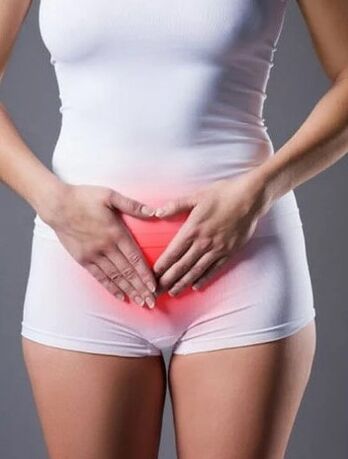Cystitis is an inflammatory process that is located in the bladder. Together with the urethra, inflammation or urethritis develops.
The characteristic characteristics of cystitis are:
- The remaining feeling of combustion and rubber at the end and immediately after urination
- Painful urination
- Pain syndrome located in the lower abdomen and in the lumbar region
- Urine incontinence is possible
- Change of urine color (bloody or muddy)
- Increased body temperature to the fever
- To be a deterioration of overall good.
The causes of the disease
The factors that provoke a sheet punchitis serve:

Infection factor:
- It is represented by an E. coli, streptococci and/or staphylococci given the narrow position of the anus and urethra (in women);
- Sexual infections (ureaplasma and mycoplasma);
- Instrumental intervention or introduction of an infection in the urethra or bladder (most common microorganisms with gram -lensing cell wall);
- Mushrooms, chlamydia, viruses;
- Inflammation in the genitator organs of a man (seed bubbles, attachments of the testicles, etc. );
- Tumor formations;
- Anatomical deviations;
- Allergy against care products (vaginal deodorants, colored toilet paper, talk, all kinds of perfume soap);
- Rare urination (characteristic of older people).
Diagnosis
The following laboratory methods are used to diagnose the disease:
- A blood test (general) shows changes under which a moderate inflammatory process is present
- The analysis of urine (general) shows color changes due to the presence of uric acid, leukocytes, red blood cells, proteins and in some cases there is a fetid smell
- By analyzing the urine by Nechiporenko, you can examine the organs of the genitarian system and its condition by calculating the number of leukocytes, red blood cells and cylinders in the urine. The results of the study are influenced by the correctness of the material and compliance with the rules of personal hygiene.
- Pathogenic microflora can be proven with an increased amount of nitrates in the urine that can be demonstrated using an indicator strip
- The presence of pus in the urine is detected by means of a Leukocyten -nest reaction.
In addition to laboratory diagnostics for the detection of cystitis, instrumental methods are carried out, the most common are cytoscape, biopsy, ultrasound, diagnosis of STD/STPP and others.
Complications
With a non -radiant type of treatment, aperture inflammation can not only get into a chronic form, but also complicated with diseases as follows:
- A state in which kidney function is disturbed - the volume of the released urine is reduced
The inflammation extends into the mucous membranes and into the muscle layer of the kidney, which is replaced by a result of Cicatricial fabric, which leads to a decrease in the size of the kidney and elasticity of its capsule.
PMR - damage to the valve structures, as a result of the urine, back into the kidney. At the same time, the localization of the infection is preserved in the urinary system and the chronic form of pyelonephritis, the scarring of kidney tissue and a complete impairment of the kidney functions occur.
Treatment of the disease
The therapy of the disease is based on the elimination of microbial inflammation of the basic cause of cystitis, which often occurs due to weakened immune status. Therefore, the treatment of the pathology includes the use of the following groups of medicines:
- Anti -inflammatory medication (NSAIDS)
- Antibacterial medication
- Immun modulators.
Risk group
The risk group is a weakened immunity, HIV-infected and pregnant women.
prevention
Cystitis prevention measures serve:
- Lack of hypothermia
- Examination of a gynecologist every six months for std/sppp
- Strict compliance with hygiene, especially during sexual contact
- Rejection of narrow (tanga) and synthetic underwear
- Care for sufficient lubrication during intimacy
- Real nutritional diet
- Prevention of constipation
- Strengthening immunity.
Diet and lifestyle
When manifesting signs of pathology, it is necessary to limit the use of solid foods to replace them with broth, yoghurt, potato puree and a large volume of liquid. After a decline in acute symptoms, a gradual introduction to the diet of solid foods is permitted - of grain, nuts and legumes. A large number of freshly squeezed juices (both vegetables and fruit) are useful for the body.
If fever, bed rest are observed, compresses and warm baths should be used. You can eliminate stagnating phenomena with cold compresses.




























